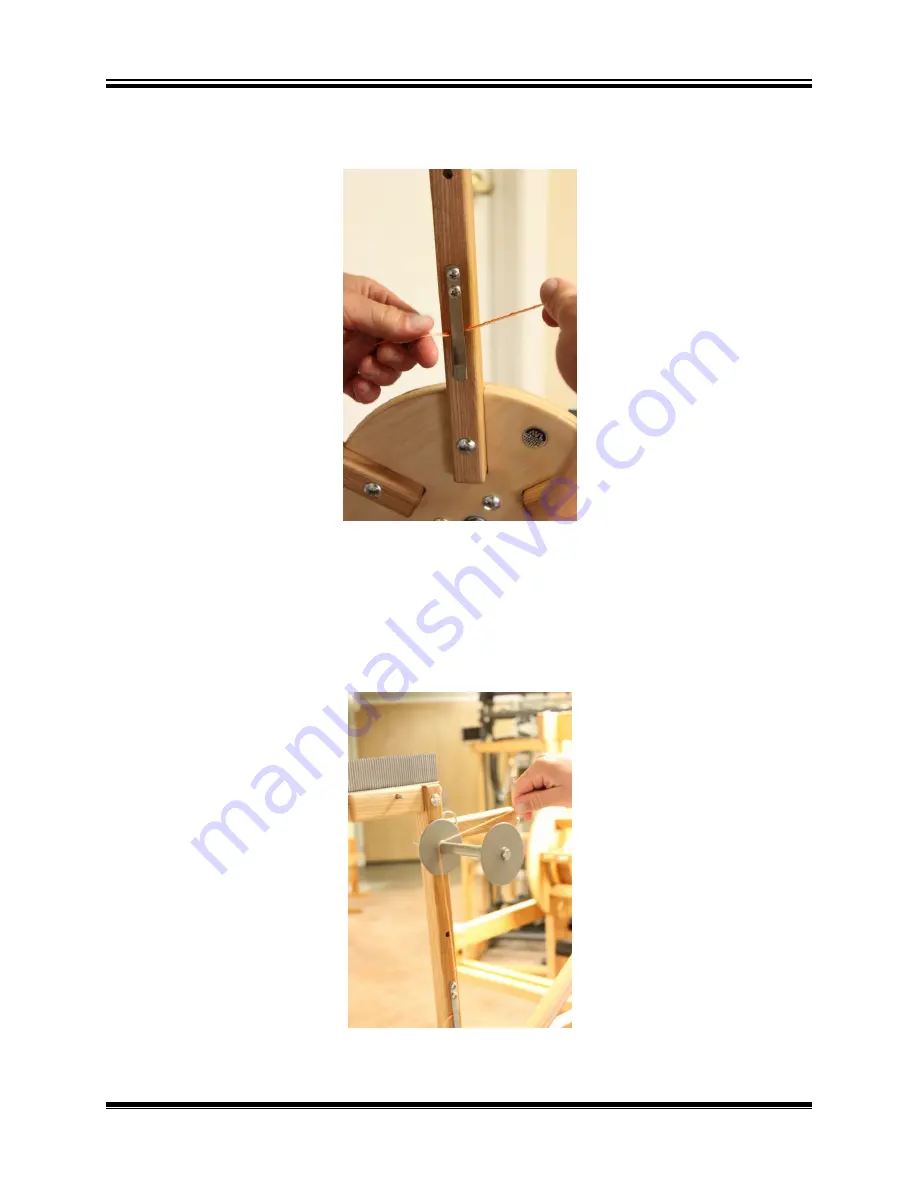
K-Series Loom User Manual
Weaving Instructions
Warping The Sectional Beam
Page | 99
7)
Slide the thread(s) under the metal catch clip, tails facing to the
left. Tails should be about 5 inches long.
Figure 93 - Catch Thread Ends
8)
Bring the thread(s) up and over the left side of the top spool so that
you are ready to wind the Warping Wheel in a counterclockwise
motion.
Figure 94 - Wind Counter Clockwise
















































